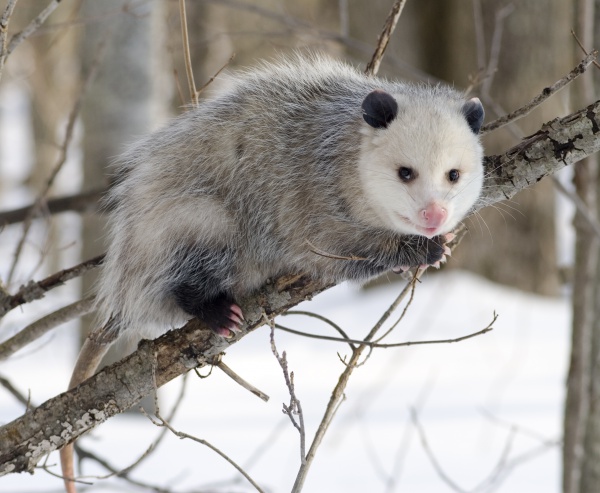Facts About Virginia opossum
The Virginia opossum, or North American opossum, is the only marsupial found north of Mexico. These solitary, nocturnal animals are about the size of a house cat and are well-known for their opportunistic behavior, often scavenging in urban areas and raiding trash cans for food. In the U.S., people commonly refer to them as "possums."
The name "opossum" derives from the Algonquian word "wapathemwa" meaning "white animal." This species is the original "opossum." The scientific name "Didelphis" comes from the Ancient Greek words for "two" and "womb." Virginia opossums are found throughout Central and North America and have been expanding their range, even reaching the West Coast during the Great Depression. Today, they are common along much of the Pacific Coast.
Virginia opossums vary in size, with larger individuals typically found in the north, while smaller ones inhabit tropical regions. They have a distinctive appearance, featuring a grayish-brown coat, white faces, long prehensile tails, and opposable, clawless thumbs. These creatures have 50 teeth, more than any other land mammal in North America, and 13 nipples arranged in a unique circle pattern.
One of their notable behaviors is "playing possum." When threatened, they can feign death, entering a near-comatose state and emitting a foul-smelling fluid to deter predators. They are omnivores, consuming a mix of plants and animals, and possess a surprising resistance to snake venom. While they do not hibernate, they seek shelter during cold spells.
Virginia opossums reproduce year-round, with females typically having one to three litters annually. The young, called joeys, are born prematurely and continue their development in their mother's pouch. Unfortunately, they have a high mortality rate and a short lifespan, both in the wild and in captivity.
In U.S. history, opossums have been hunted for food and are woven into Southern folklore and culinary traditions. They have become a cultural icon in the American Southeast. Interestingly, they are resistant to rabies and help control Lyme disease by feeding on ticks that carry the disease.

 Guatemala
Guatemala